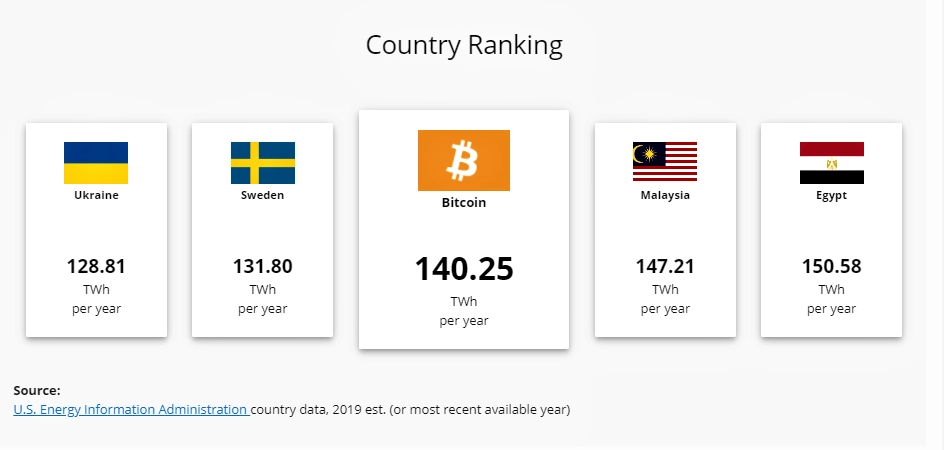
The process of mining a cryptocurrency is an exhaustive one.
Although Bitcoin (BTC) has no central authority to keep track of all its trades, transactions between participants still need to be authenticated in some way, to ensure that transactions remain transparent.
Almost all cryptocurrencies do this by maintaining a public ledger to document transaction data. Bitcoin is no different. Participants (called “miners”) are relied on to create and validate “blocks” of transaction data by compiling as many transactions as possible into a block and using a mathematical process to audit that data.
Miners race to solve complex cryptographic problems in order to successfully add their block of data onto the blockchain, consuming vast amounts of computing power in the process. In exchange for contributing their hardware to the network, miners are then rewarded with newly minted bitcoin.
In 2018, a miner could earn 12.5 BTC (approximately $539,211.25 USD) on each successfully verified block of data. Following the Bitcoin halving on Feb. 2021, the reward for each new block now sits at 6.25 BTC (~ $269,605.63 USD).
All around the world, over 150 quintillion calculations are made each second with the aim of being the first to authenticate a new block, and receive cryptocurrency. The calculations become ever more complex as the blockchain expands, prompting miners to employ the use of specialised hardware (known as ASIC miners) to perform the necessary operations.
These days, it’s not uncommon to find crypto mining farms across the globe crammed with supercomputers running 24 hours a day, seven days a week mining bitcoin.
As a cryptocurrency becomes more valuable, this is generally what happens. People rush to mine as much of the digital coin as they can, disregarding any potential negative effects of such high energy consumption.
How Much Energy Does Bitcoin Mining Actually Use?
If Bitcoin were a country, it’s estimated that the digital coin would rank 27th among the world’s top 30 electricity-demanding nations.
Each Bitcoin transaction consumes approximately 707 kilowatt-hours (KWh). An analysis by the University of Cambridge’s Centre for Alternative Finance shows that the Bitcoin network uses over 140 terawatt-hours (TWh) each year. For contrast, a country like Egypt has an annual energy consumption of 150.58 terawatt-hours.
In recent years, the power demand from crypto farms (particularly those in Iran, Abkhazia and Xinjiang) have been so strong that they have led to intense blackouts, prompting government action.
Xinjiang and the Sichuan region of China together account for more than half of the total Bitcoin mining hash rate, according to Primitive Crypto partner, Dovey Wan.
What all of these regions share in common is apparent: low-cost energy, primarily derived from carbon and fossil fuels, for miners to make use of.
It becomes clear then, that to fix Bitcoin’s intense energy consumption, we must either: a) End human greed, b) Make clean energy ubiquitous and cheap, or c) Change the way new cryptocurrencies are mined. 
Criticisms over Bitcoin’s energy demands have existed since the cryptocurrency’s inception.
On 27 January 2009, only two weeks after receiving the first ever bitcoin transaction, developer and cryptographer Hal Finney tweeted about possible future CO2 emissions. However, it wasn’t until late 2017 that interest in Bitcoin’s long-term sustainability became widespread.
Thinking about how to reduce CO2 emissions from a widespread Bitcoin implementation
--- halfin (@halfin) January 27, 2009
Twelve years later and Tesla Inc CEO Elon Musk’s critical tweets surrounding bitcoin’s energy use havecurrently sent the price of bitcoin into a freefall.
Tesla & Bitcoin pic.twitter.com/YSswJmVZhP
— Elon Musk (@elonmusk) May 12, 2021
As in previous years, this sort of criticism has elicited a variety of responses, from agreement, to counter-arguments andin Elon’s case, disapproval over the way his twitter activity seems to influence the entire cryptomarket.
Elon musk should tweet about my weight so it would plummet
--- John .W Rich (fat tech exec) (@Burgeroptions) May 17, 2021
Is there a workable solution to Bitcoin’s energy problem?
The short answer is yes. In reality, however, things are not so straightforward.
Crypto mining farms have already sprung up in countries which rely heavily on renewable energy sources for their electricity (such as Norway and Iceland). Cryptocurrency miners in these countries use inexpensive hydro-electric and geothermal energy to power their machines.
According to the 3rd Global Cryptoasset Benchmarking Study conducted by the University of Cambridge last year, 76% of cryptocurrency miners now use renewable energy. In 2018, the same study reported a figure of around 60%. 
In addition, the low temperatures in regions like Iceland and Norway help cut down costs by naturally cooling the machinery. The issue with using “clean energy” to mine bitcoin revolves around consistency. Bitcoin mines require an uninterrupted power supply, and renewable energy is often seasonal and irregular.
Energy efficient cryptocurrencies have also attempted to address Bitcoin’s current sustainability issues by altering the underlying technology required to mine new digital coins.
Take Cardano, for instance. Cardano claims to be more energy efficient than Bitcoin thanks to its “Proof-of-Stake” blockchain.
Proof-of-Stake (PoS) validates transactions by allocating mining power based on the proportion of coins held by a miner. Rather than using energy to solve endless cryptographic puzzles, a PoS miner is restricted to mining a percentage that reflects the miner’s own holdings (or “stake”). A miner who owns 0.2% of all available coins, for example, can effectively mine only 0.2% of the blocks.
Proponents claim that this system is far more energy efficient as it only allows users to validate blocks according to the percentage of their stake in a protocol, eliminating most of the energy-intensive competition that Proof-of-Work is built on.
Currently, Bitcoin operates on a Proof-of-Work protocol. If this method used to mine Bitcoin was replaced by Proof-of-Stake, we could see a significant reduction in the amount of carbon emissions produced by mining new coins.
However, there is still some disagreement over which method provides the most security within the space.
Some critics argue that the Proof-of-Stake system risks pivoting into centralized control of blockchains, by establishing an oligopoly in which users with the most capital have the most influence over the system (though the same can be said for the Proof-of-Work method).
In the end, any one of these solutions could serve as a remedy to Bitcoin’s energy consumption, if implemented in the near future. It all comes down to a combination of global utility, efficiency and our patience.
Editor-in Chief
Related Posts






Subscribe to our newsletter!
Information




